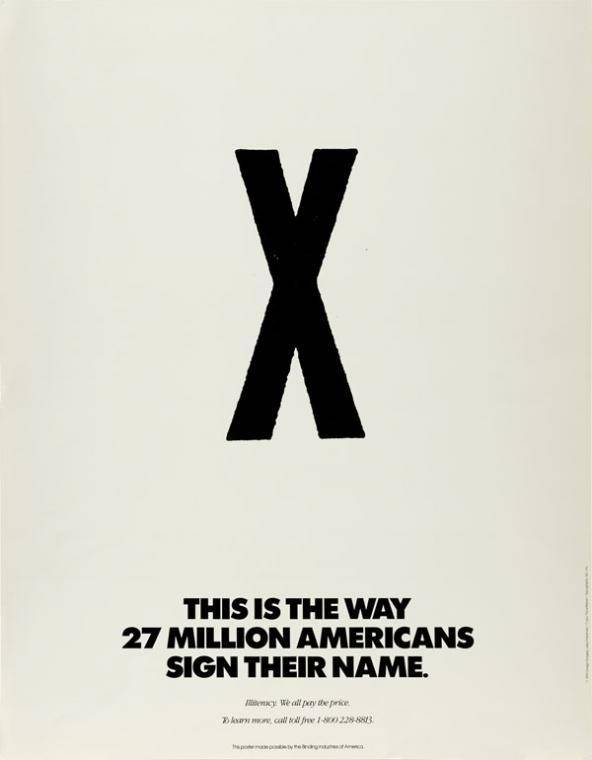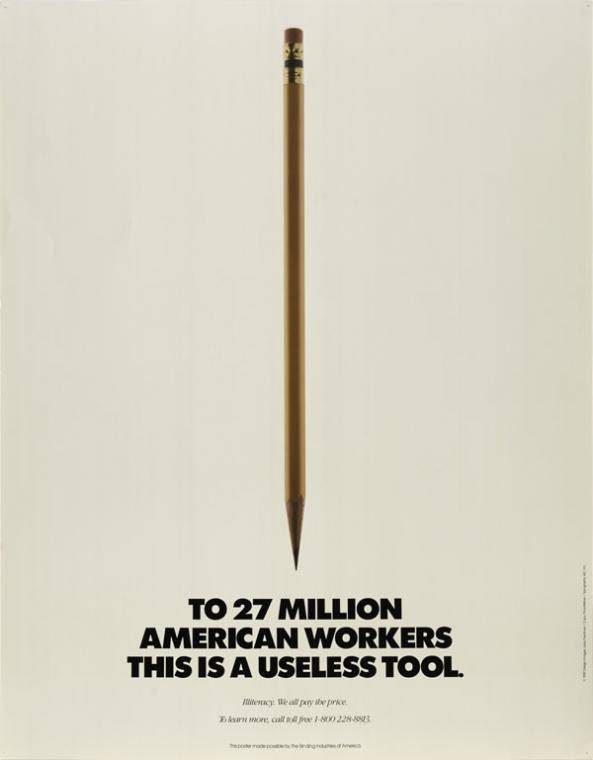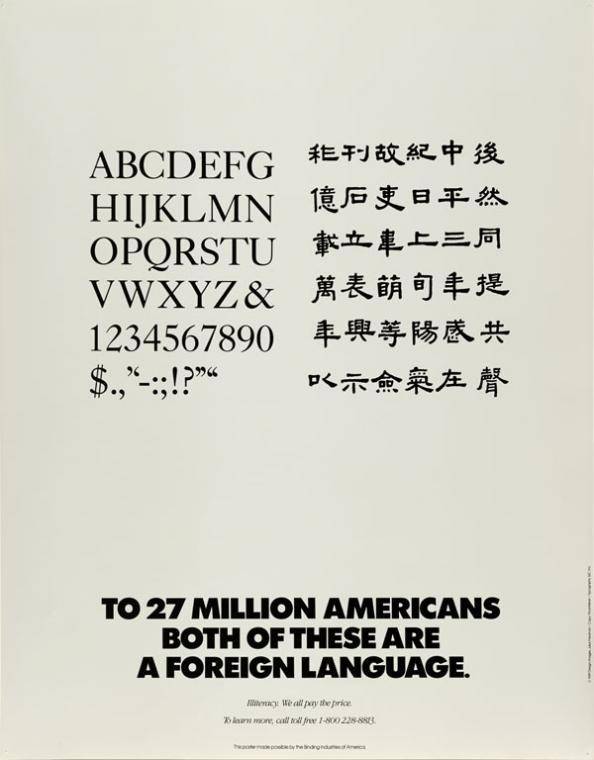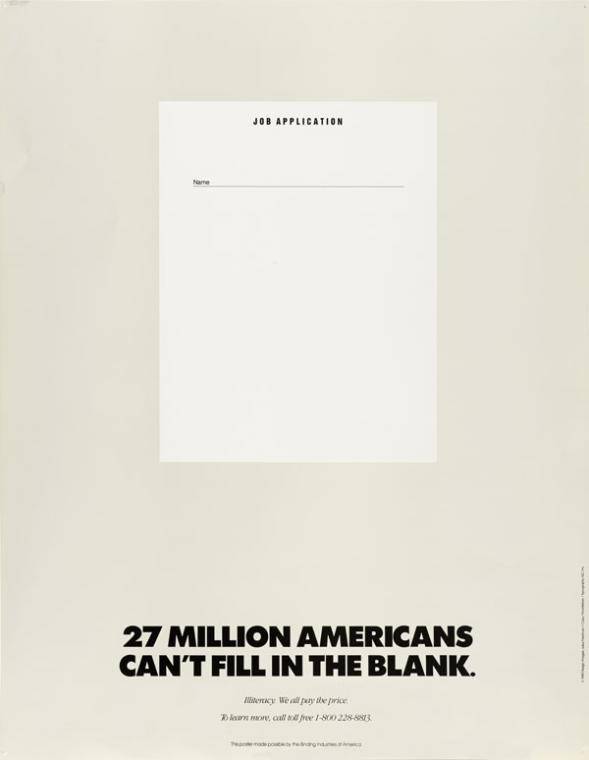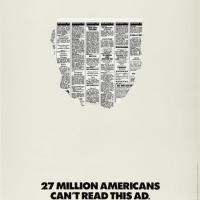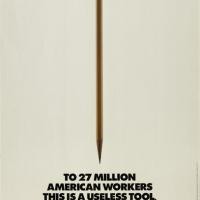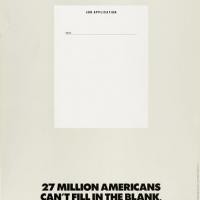Today is International Literacy Day, which highlights the importance of literacy to individuals and to society. In 1991, designer Julius Friedman addressed the problem of adult illiteracy in a series of posters, four of which are on view at the Denver Art Museum in Drawn to Action: Posters from the AIGA Design Archives. Using striking graphics and the shocking statistic that 27 million American adults couldn’t read, Friedman alerted the literate public to this national problem.
The message of Friedman’s posters was that illiteracy not only affects the quality of life of individuals who can’t read, but it also affects the larger population who can. In the 23 years since Friedman created these posters, adult illiteracy in the United States hasn’t improved much. You might be surprised to learn that according to a 2013 study 32 million adult Americans (14 percent of the population) are illiterate.
About International Literacy Day
While 32 million illiterate adults is a significant number, it’s important to note that the United States has one of the highest literacy rates in the world for both men and women over the age of 15. Literacy rates around the world, especially in developing countries, are much lower. Two-thirds of illiterate adults in the world are women. For these reasons, the United Nations Educational, Scientific, and Cultural Organization (UNESCO) started International Literacy Day in 1966. UNESCO reminds UN member states each year on this date of the status and importance of literacy.
The notion of literacy has evolved over the years to include diverse skills needed to thrive in a globalized, knowledge-oriented society. In the United States, celebrations of Literacy Day revolve around a theme created by the International Reading Association. This year, the theme is Lift Off to Literacy, which asks teachers to commit to helping their students’ literacy habits by devoting an additional 60 seconds to literacy activities for 60 days. When young people develop these habits early in life, they are more likely to avoid the serious consequences of adult illiteracy.
Statistics
Illiteracy has significant implications for those living with it. The standard definition of literacy includes reading, writing, and numeracy skills, as well as the notion of functional literacy, which links the three skills together. Illiteracy correlates with underemployment, poverty, crime, and substandard health and nutrition. The income of a person with poor literacy is shown to be stagnant throughout their working life, while literate individuals can expect to double or triple their income over their career.
Children of illiterate parents are more likely to drop out of school, continuing this cycle. In 2006, the National Institute for Literacy estimated that low literacy skills costs businesses and taxpayers $20 billion in lost wages, profits, and productivity each year.
How You Can Help
So, you might be wondering what you can do to help promote literacy in your community or around the world. Here are a few tips to get you started:
- Read to a child you know and take him or her to the library or a bookstore.
- Check with your local library and schools. They might have adult or family literacy programs with which you can volunteer.
- Donate to or get involved with one of these literacy charities.
- Read! Your commitment to literacy will inspire others.
The DAM is closed on Mondays, but you can see Drawn to Action and make your own poster (about literacy or other social problems) Tuesdays through Sundays through January 18, 2015.
Image credit: Julius Friedman, To 27 Million American Workers This is A Useless Tool, 1991. Offset lithograph. © Julius Friedman. AIGA Design Archives: Gift of AIGA. 2007.6160.7
